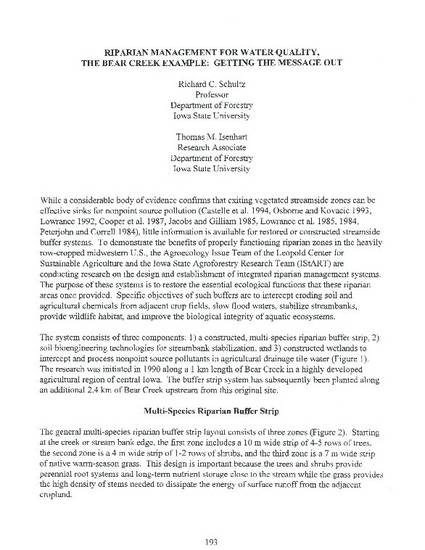
While a considerable body of evidence confirms that exiting vegetated streamside zones can be effective sinks for nonpoint source pollution (Castelle et al. 1994, Osborne and Kovacic 1993, Lowrance 1992, Cooper et al. 1987, Jacobs and Gilliam 1985, Lowrance et al. 1985, 1984, Peterjohn and Correll 1984), little information is available for restored or constructed streamside buffer systems. To demonstrate the benefits of properly functioning riparian zones in the heavily row-cropped midwestern U.S., the Agroecology Issue Team of the Leopold Center for Sustainable Agriculture and the Iowa State Agroforestry Research Team (IStART) are conducting research on the design and establishment of integrated riparian management systems. The purpose of these systems is to restore the essential ecological functions that these riparian areas once provided. Specific objectives of such buffers are to intercept eroding soil and agricultural chemicals from adjacent crop fields, slow flood waters, stabilize streambanks, provide wildlife habitat, and improve the biological integrity of aquatic ecosystems.
Available at: http://works.bepress.com/thomas_isenhart/67/
